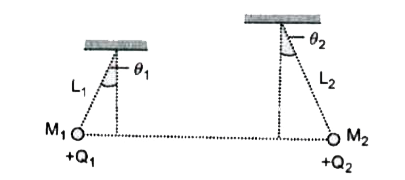According to Einstein's photoelectric equation the graph of K.E. of the photoelectron emitted from the metal versus the frequency of the incident radiation gives a straight line graph whose slope Solution in Kannada
depends upon intensity of radiation
depends upon nature of metal used
is the same for all metals and independent of intensity of radiation
depends upon both intensity of radiation and metal used.
The correct Answer is:B
Step by step video, text & image solution for According to Einstein's photoelectric equation the graph of K.E. of the photoelectron emitted from the metal versus the frequency of the incident radiation gives a straight line graph whose slope by Physics experts to help you in doubts & scoring excellent marks in Class 12 exams.
Topper's Solved these Questions
- BOOK - MODERN PUBLICATIONCHAPTER - ELECTRONS & PHOTONSEXERCISE - MULTIPLE CHOICE QUESTIONS (LEVEL-II)63videos
ELECTRONS & PHOTONS
- BOOK - MODERN PUBLICATIONCHAPTER - ELECTRONS & PHOTONSEXERCISE - MULTIPLE CHOICE QUESTIONS (LEVEL-III)9videos
ELECTRONS & PHOTONS
- BOOK - MODERN PUBLICATIONCHAPTER - ELECTROMAGNETIC WAVESEXERCISE - RECENT COMPETITIVE QUESTIONS4videos
ELECTROMAGNETIC WAVES
- BOOK - MODERN PUBLICATIONCHAPTER - ELECTROSTATICSEXERCISE - RECENT COMPETITIVE QUESTIONS39videos
ELECTROSTATICS
Similar Questions
Maximum frequency of the photon produced by the union of a proton and a antiproton is (given : mp=1.67×10−27kg):
00:53View SolutionEnergy required for the electron excitation in Li++ from the first to the third Bohr orbit is :
01:39View SolutionThe speed of electromagnetic wave in vacuum depends upon the source of radiation
02:54View SolutionTwo small spheres of masses M1andM2 are suspended by weightless insulating threads of lengths L1andL2 The spheres carry charges Q1andq2 respectively . The spheres are suspended such that they are in level with one another and the threads are inclined to the vertical at angles of θ1andθ2 as shown . Which one o fthe following conditions , if θ1=θ2 ?
 04:17View Solution
04:17View SolutionAccording to Einstein's photoelectric equation, the plot of the maximum kinetic energy of the emitted photoelectrons from a metal versus frequency of the incident radiation gives a straight line whose slope
01:56View SolutionAccording to Einstein's photoelectric equation, the graph between the kinetic energy of photoelectrons ejected and the frequency of incident radiation is
04:58View SolutionAccording to Einstein's photoelectric equation, the graph between kinetic energy of photoelectrons ejected and the frequency of the incident radiation is :
04:58View SolutionIn a photoelectric experiment, the reciprocal of the slope of the straight line graph giving the relation between the stopping potential and the frequency of incident radiation gives
01:46View SolutionAccording to Einstein's photoelectric equation, the plot of the K.E. of the emitted photoelectrons from ametal vs the frequency of incident radiation gives a straight line where slope
03:20View SolutionAccording to Einstein's photoelectric equation, the graph of KE of the photoelectron emitted from the metal versus the frequency of the incident radiation gives a straight line graph, whose slope
View SolutionAccording to Einstein's photoelectric equation the graph of K.E. of the photoelectron emitted from the metal versus the frequency of the incident radiation gives a straight line graph whose slope
02:48View SolutionAccording to Einstein's photoelectric equation graph of kinetic energy of emitted photo electrons from metal versus frequency of incident radiation is linear .Its slope……
01:49View SolutionAccording to Einstein's photoelectric equation, the graph between kinetic energy of photoelectrons ejected and the frequency of the incident radiation is :
02:36View SolutionAccording to Einstein.s photoelectric equation, the plot of the KE of emitted photoelectrons from a metal and the frequency, of the incident radiation gives as straight line, whose slope
02:59View SolutionAccording to Einstein's photoelectric equation , the graph between the kinetic energy of photoelectrons ejected and the frequency of incident radiation is
04:33View Solution

